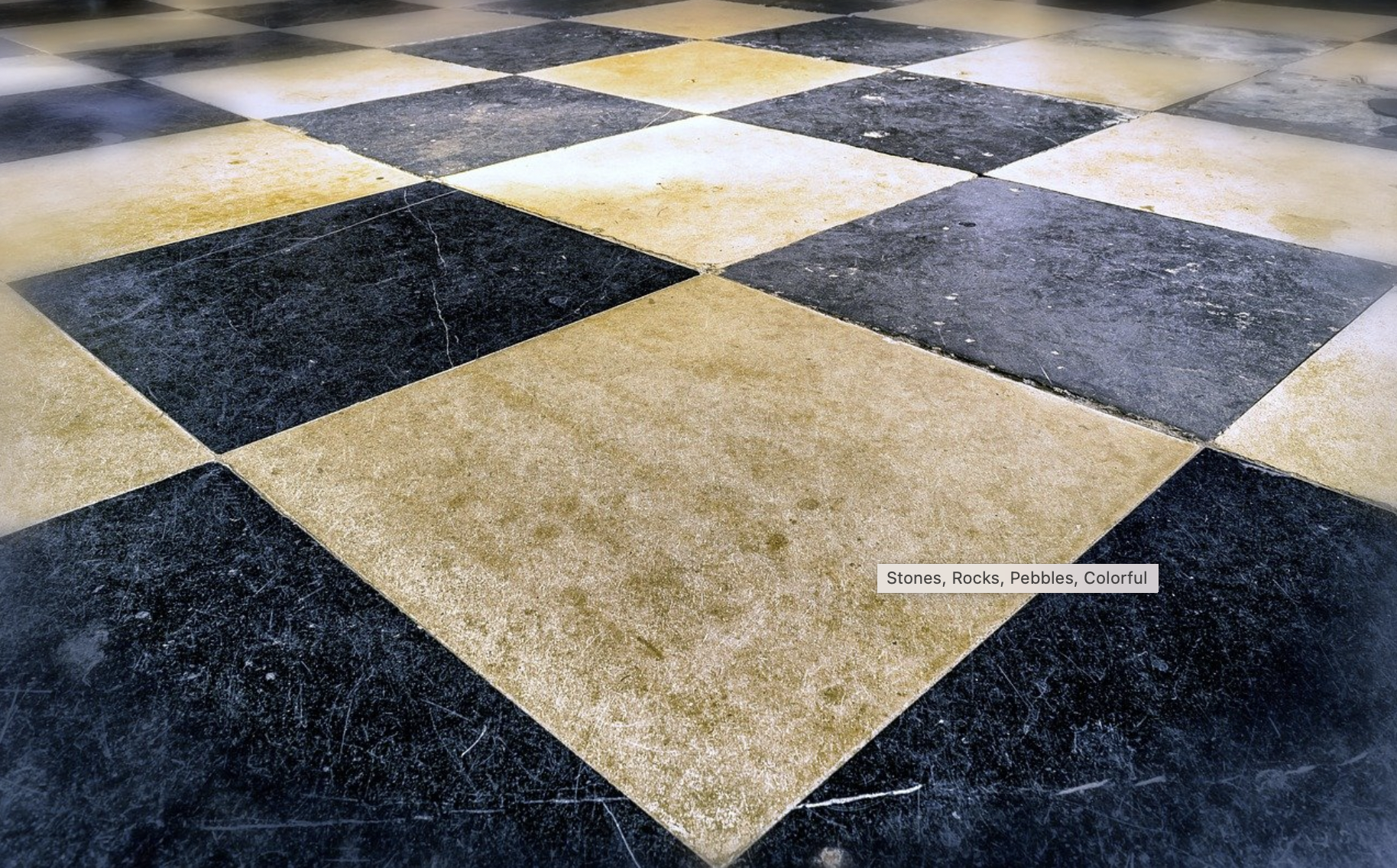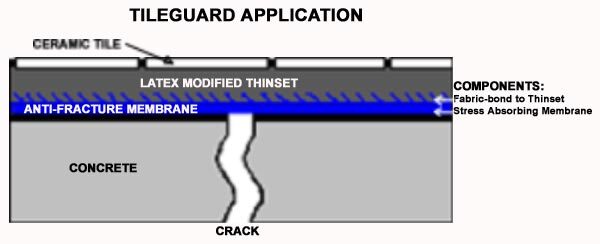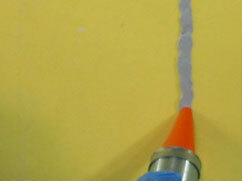A home’s high traffic areas, like a kitchen, bathroom, and foyer, often utilize durable, elegant ceramic tile flooring. Homeowners like water and stain-resistant tile because its solid surface does not attract or trap dust, dirt, pollen, or other allergens.

Tile also comes in endless design and price options. However, some find hard, cold tile uncomfortable. Furthermore, the tile’s weight may make it inappropriate for upper-story installations or floors with inadequate floor structures. In addition, DIYers may find tile installation difficult and time-consuming.
You must correctly install tile with a high-quality anti-fracture membrane in order to ensure its long-term integrity. The best anti-fracture membrane for tile prevents reflection cracking and contributes to a warmer, quieter, and drier environment – all features offered by our Polyguard’s Tileguard™ Anti-Fracture Underlayment.
The Cost of Ceramic Tiles
Ceramic tile can cost as little as $5 per ft2 for budget tile and DIY installation. However, professionally installed, high-end tile can cost the same as quality hardwood flooring. Typically, professionally installed ceramic tile costs range from $15 ft2 to $60 per hour, depending on the tile and the installation complicity.
Maintenance and Repair of Tile
A tile floor can last for hundreds of years if correctly installed and maintained.
Low-maintenance, glazed tile flooring has a hard protective top layer that makes it impervious to moisture and stains, which makes it an ideal flooring solution for wet areas like laundry and mudrooms. Routine maintenance consists of only vacuuming or sweeping with a soft brush to remove loose debris and dirt. You must seal unglazed tile and all grout to protect against moisture and keep it stylish.
Hard, impact-resistant tile can crack due to improper installation or problems with the tile underlayment. Specifically, reflective cracking can occur when a cracked concrete substrate causes the bonded tile layer to crack.
Applying either sheet or liquid-applied anti-fracture membranes will stop cracks moving from the substrate into the tile. Some prefer the term “crack isolation membrane” instead of “anti-fracture membrane” because no membrane installed behind tile can completely protect against cracking from outside forces.
Why Tile on Concrete Slab Needs an Anti-Fracture Membrane
Reflective cracking poses a significant threat when installing tile over concrete, which can delay project completion time, cost money, and hurt reputations. At some point, almost all concrete will crack due to settling, shrinkage, the placing of a saw cut, or in areas of cold joints – mandating the use of a protective anti-fracture membrane.
Applying an anti-fracture membrane keeps cracks that originate in the substrate from spreading up through the grout and tile. It is important to know that an anti-fracture membrane only covers horizontal movement, never vertical.
The Design of Anti-Fracture Membranes
The design of an anti-fracture (crack isolation) membrane allows for expansions and contraction (ranging from 1/16- to 3/8-inch) in the concrete, so its cracks will not directly transfer to the tile and grout which can ruin your work. The stretchy nature of the anti-fracture membrane dissipates the force from the crack into the membrane, and prevents it from moving up into the tile. For crack-prone concrete slabs, an anti-fracture membrane can sufficiently protect tiles.
Thin layered, anti-fracture membranes typically come in liquid-applied and sheet membranes. These membranes provide both partial and complete coverage.
Liquid-Applied Anti-Fracture Membrane
Liquid-applied anti-fracture membranes provide a thin section of load-bearing, monolithic membrane, to inhibit the transfer of new or existing cracks from the substrate to the tile installation. You can apply it as a single component with a flat trowel, roller, or brush. It will conform to all forms or irregular shapes.
Liquid membranes allow energy absorption into the membrane, to prevent the crack from transferring through to the tile installation. Liquid membranes do not raise the tile height and allow seamless transitions.
Peel and Stick Sheet Membrane Anti-Fracture Membrane
Sheet membranes, made of chlorinated polyethylene (CPE) with a polyester fabric laminated on both sides, come in rolls of varying widths. Sheet membranes typically bond to the substrate with a thin-set mortar. They depend on a crack’s movement to slip underneath the sheet, not allowing the crack to transfer through to the tile. As with liquid applied membranes, sheet membranes do not raise the tile height.
How to Choose the Best Anti-Fracture Membrane for Tile
Selecting the best membrane for a specific application requires professional consideration of its service ratings, the overall project needs and specification, and other installation materials. The American National Standards Institute (ANSI) lists performance standards for Anti–fracture membranes (A118.12), Waterproof membranes (A118.10), and Sound control (A118.13).
Polyguard strongly recommends that you contact one of our anti-fracture membrane experts to get advice on choosing the best anti-fracture membrane for tile, such as our Tileguard™ Anti-Fracture Underlayment.
Tileguard Anti-Fracture Underlayment
Tileguard™ 40 mil thick composite membrane contains fabric and rubberized asphalt, to provide superior protection against the risk of ceramic tiles cracking in a flooring application. You can install Tileguard™ over various subflooring surfaces, including underneath brick or ceramic flooring with thick or thin-tile setting materials.

The elastomeric, self-adhesive membrane is wound on cores with a disposable silicone release liner that prevents sticking when rolled. When installed correctly, the membrane absorbs stresses caused by concrete cracking in order to avoid the transfer of cracks in the subfloor to the above tile surface. It also creates a warmer, quieter, and drier environment.
Polyguard companion products for the Tileguard™ Anti-Fracture Underlayment include;
650 LT Liquid Adhesive
650 LT Liquid Adhesive (a rubber-based adhesive in solvent solution) primes all structural concrete, wood, or masonry surfaces before membrane installation. It allows for applications down to 25°F (-4°C).
650 WB Liquid Adhesive
650 WB Liquid Adhesive (a water-based, rubber-based, low-tack adhesive) primes all structural concrete, wood, or masonry surfaces before membrane installation. It allows for applications in ambient temperatures and surface temperatures of 40°F (5°C) and rising.
Detail Sealant PW™
Detail Sealant PW™ is a non-corrosive and non-staining non-isocyanate adhesive/sealant that replaces silicone and urethane sealants.

LM-85 SSL Liquid Membrane
You can use two-component LM-85 SSL semi-self leveling, asphalt modified, urethane liquid membrane in conjunction with Polyguard waterproofing membrane in Dual Core and pitch pan applications, in ambient and surface temperatures of 40°F (5°C) and rising.
Choosing the Best Anti-Fracture Membrane for Tile
A high-quality anti-fracture membrane for tile, like Polyguard’s Tileguard™, can stop or significantly limit reflection cracking due to a cracked concrete substrate. The membrane will also contribute to a warmer, quieter, and drier environment.
Don’t hesitate to contact Polyguard’s anti-fracture membrane experts today to get advice on choosing the best anti-fracture membrane for tile, like our Tileguard™ Anti-Fracture Underlayment.
